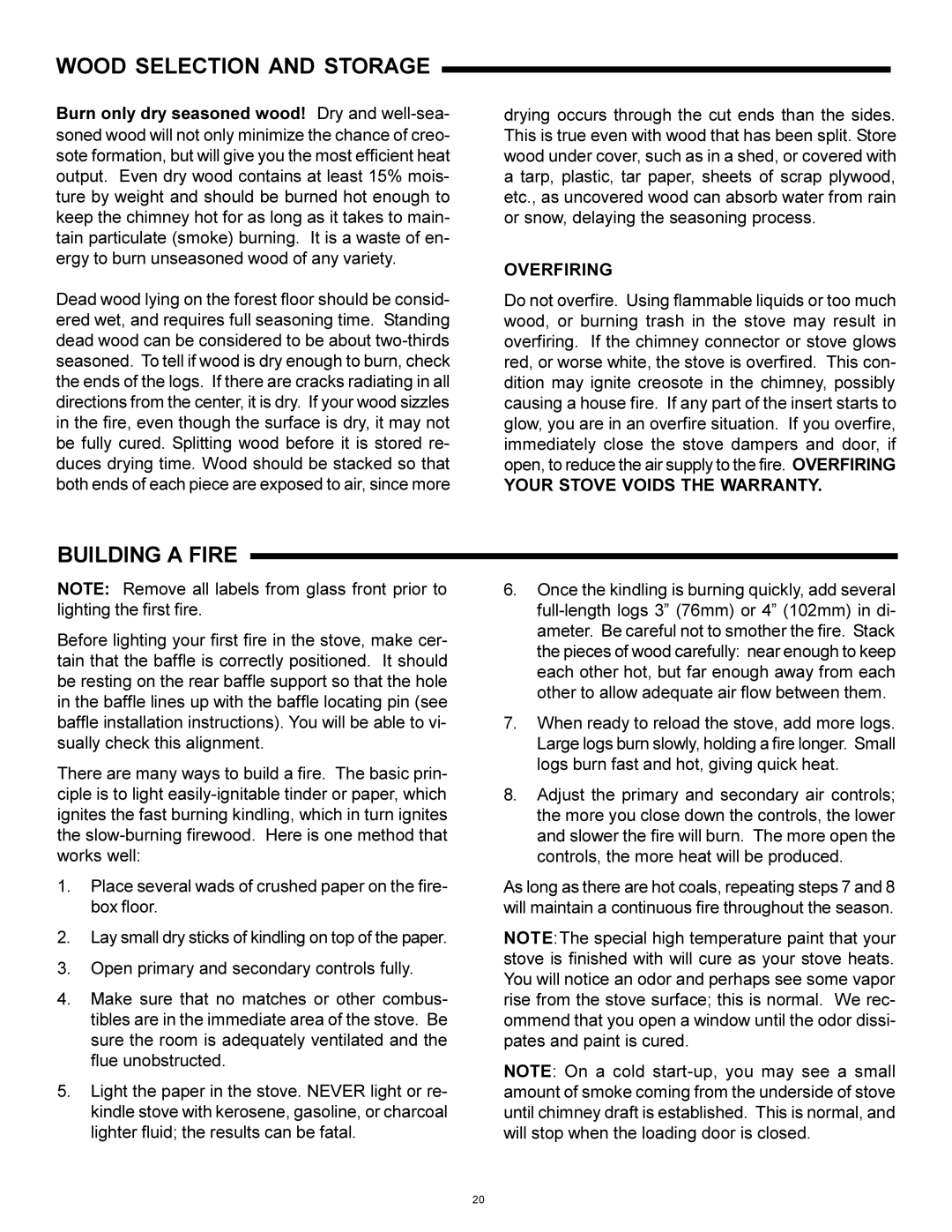
WOOD SELECTION AND STORAGE
Burn only dry seasoned wood! Dry and
Dead wood lying on the forest floor should be consid- ered wet, and requires full seasoning time. Standing dead wood can be considered to be about
BUILDING A FIRE
drying occurs through the cut ends than the sides. This is true even with wood that has been split. Store wood under cover, such as in a shed, or covered with a tarp, plastic, tar paper, sheets of scrap plywood, etc., as uncovered wood can absorb water from rain or snow, delaying the seasoning process.
OVERFIRING
Do not overfire. Using flammable liquids or too much wood, or burning trash in the stove may result in overfiring. If the chimney connector or stove glows red, or worse white, the stove is overfired. This con- dition may ignite creosote in the chimney, possibly causing a house fire. If any part of the insert starts to glow, you are in an overfire situation. If you overfire, immediately close the stove dampers and door, if open, to reduce the air supply to the fire. OVERFIRING
YOUR STOVE VOIDS THE WARRANTY.
NOTE: Remove all labels from glass front prior to lighting the first fire.
Before lighting your first fire in the stove, make cer- tain that the baffle is correctly positioned. It should be resting on the rear baffle support so that the hole in the baffle lines up with the baffle locating pin (see baffle installation instructions). You will be able to vi- sually check this alignment.
There are many ways to build a fire. The basic prin- ciple is to light
1.Place several wads of crushed paper on the fire- box floor.
2.Lay small dry sticks of kindling on top of the paper.
3.Open primary and secondary controls fully.
4.Make sure that no matches or other combus- tibles are in the immediate area of the stove. Be sure the room is adequately ventilated and the flue unobstructed.
5.Light the paper in the stove. NEVER light or re- kindle stove with kerosene, gasoline, or charcoal lighter fluid; the results can be fatal.
6.Once the kindling is burning quickly, add several
7.When ready to reload the stove, add more logs. Large logs burn slowly, holding a fire longer. Small logs burn fast and hot, giving quick heat.
8.Adjust the primary and secondary air controls; the more you close down the controls, the lower and slower the fire will burn. The more open the controls, the more heat will be produced.
As long as there are hot coals, repeating steps 7 and 8 will maintain a continuous fire throughout the season.
NOTE:The special high temperature paint that your stove is finished with will cure as your stove heats. You will notice an odor and perhaps see some vapor rise from the stove surface; this is normal. We rec- ommend that you open a window until the odor dissi- pates and paint is cured.
NOTE: On a cold
20
